Shelby Rogala, Professional and Organizational Development Manager
With four and sometimes five generations now working or volunteering in many organizations, tension is inevitable. In MNA’s “Build Your Best Team” workshop, we note that understanding generations is a bit like coming to know other cultures – the different contexts and environments that individuals are raised in deeply impact our varied approaches to life, work, and fulfillment.
Bridging our differences in order to work together as functional teams is key to attracting and retaining talent in today’s multi-generational workplace. In the coming months MNA will offer a series of articles, tools, and resources designed to help Montana’s nonprofits be competitive as top-choice employers. Much of what we address applies equally well to the Board of Directors and staff teams. We begin with the topic of change.
Change is one of the key areas of tension that emerged from our research and focus groups. From changes to staffing structure, introducing new programs, or swapping the color of our business cards – change can be as scary as it is exciting, and as risky as it is necessary. It’s also an area where we have blind spots. We don’t necessarily have insight into our own perspectives on change until we run into problems. Luckily, we have tools within reach! Below is MNA’s Nine-Step process for working better together through change and new ideas – regardless of whether you are excited for change or pleased with where things rest currently.
For the idea-driven change champions. We know. You’re full of great ideas. And it can be hard to feel like you are shot down at every turn in the road, particularly when you have the mission in mind. But fret no longer, we have a perfect recipe for your next successful workplace transformation:
- Observe First. Though it is tempting to jump right into problem solving mode, there is something to be said about watching the wheel turn before trying to reinvent it. Pay attention to who has ownership over the program or process you are interested in changing. Learn about the history and humans involved to gain a clearer insight into why things are the way they are.
- Start an idea-journal. Jot down those great ideas for fixing the process, moving the world forward, or otherwise revolutionizing your workplace. Store them in a single location and continue improving, modifying, and learning about both your ideas and the puzzle you’re trying to solve. Try to keep these ideas to yourself as you allow them to grow and mature. (We promise – your colleagues will thank you)
- Prioritize. As Morten T. Hansen says in his book, Great at Work, “Do less, then obsess.” Meaning – you can’t (re)build the Pyramids in a day, so choose 1-3 ideas for change you’d like to prioritize and bring to the rest of your team. Note: This doesn’t mean 1-3 ideas each day.
- Pitch Your Idea. It’s go time. Use the linked resource to develop a full proposal of your idea for change – whether it’s why we should stock the vending machine with healthier snacks or how to shift our communications strategy. Presenting your idea as fully baked as possible will demonstrate intentionality and ability to see change through to completion.
- Follow Through. Oh right, that part.
For the stability-minded process heroes. Risk isn’t something nonprofits can or should absorb lightly. Our ability to fulfill our missions depends on careful moves and proven results – and this is something you truly understand. Bring your experience to the table and help your organization make responsible decisions with these simple steps:
- Breathe. They say the only thing constant is death and taxes, so change is inevitable. That doesn’t make it any easier, but we can control the risk of hyperventilating by taking a few moments to breathe slowly when the dreaded phrase, “Why don’t we do it this way,” surfaces.
- Share Your Experience. Offer up your experience with the proposed change. As we’ve learned, this doesn’t sound like “We’ve tried that, it won’t work.” Instead, be brave and share exactly what you tried, and where you ran into obstacles.
- Invite New Perspectives. After making your case, open yourself up to learning the new idea. Though you’ve been there and done that, new solutions to tricky problems emerge as our world rapidly evolves. Ask your office change-agent to use the pitch an idea worksheet to structure the dialogue, and create space for them to share their perspectives in an environment that won’t send you into a mid-morning panic attack.
- Offer Your Support. If the change is a go, bring your experience to the table and help grow your organization. Consult this resource to learn how to better communicate change with your entire team.
For nonprofit teams, recognizing that both our change champions and process heroes have the best interest of the mission in mind can be an important step. We are all working to make Montana better, so let’s learn to do it together.
Like the “Pitching an Idea” tool? This is part of our Build Your Best Team workshop, which MNA can present for your organization. Email [email protected] to learn more.

